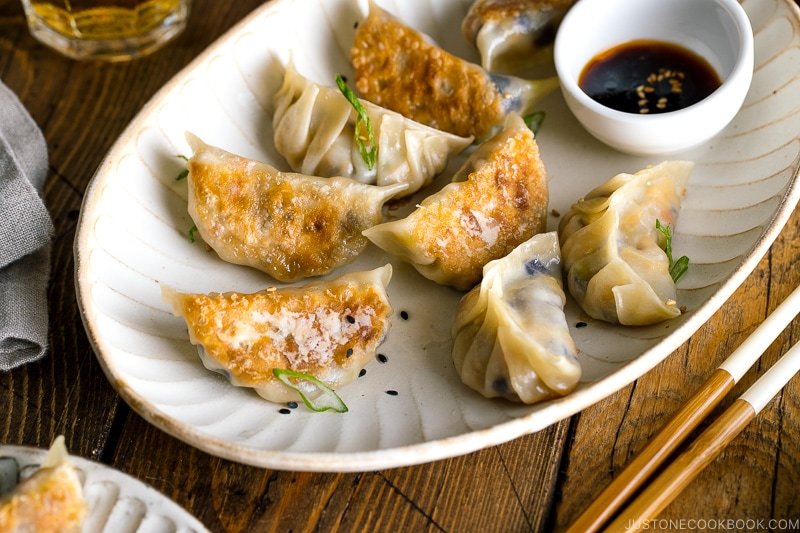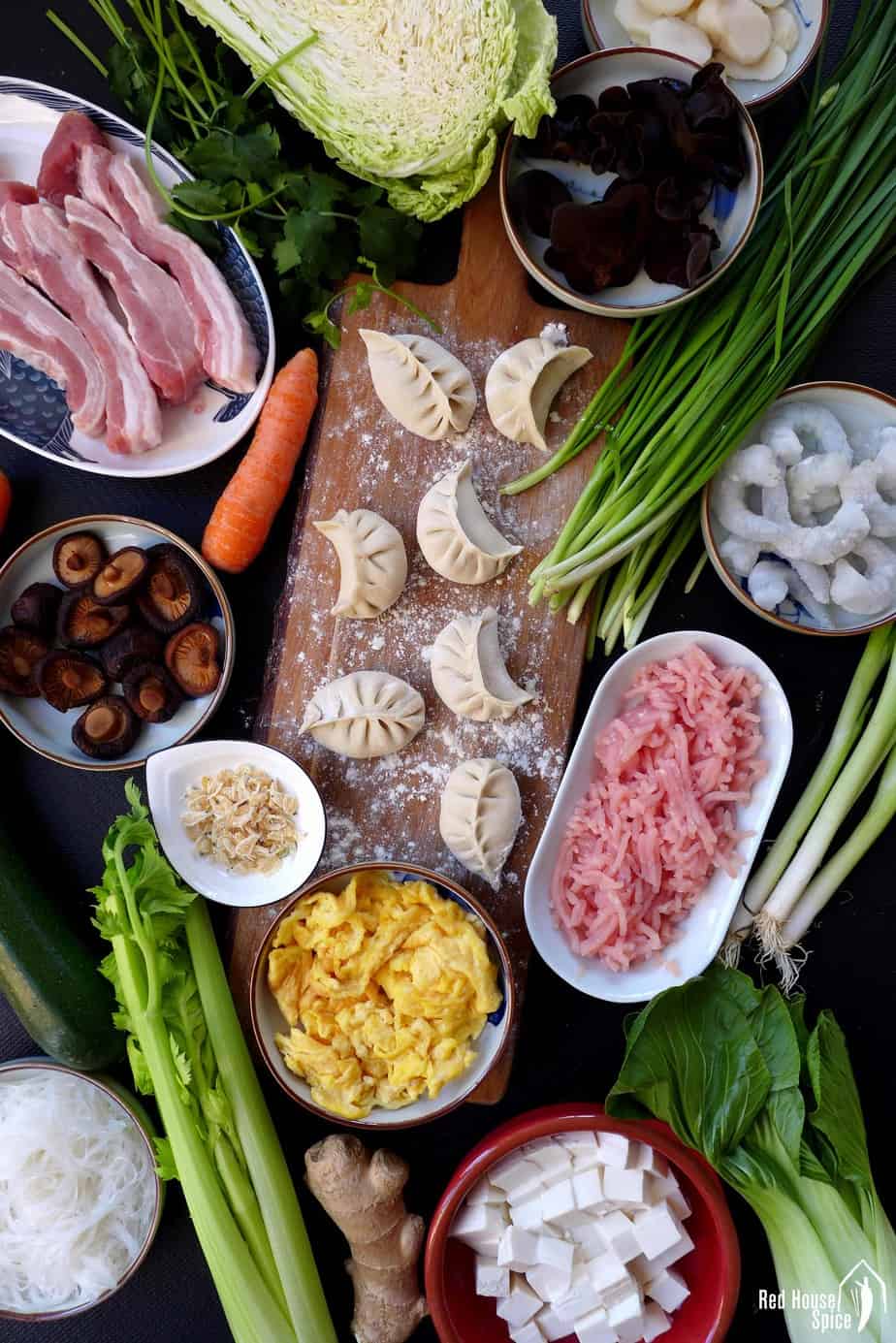Japan boasts of heavenly meals such as Ramen and Sushi but again, popularly known for the mouthwatering Gyoza! Have you ever heard about Gyoza or even tasted it before? Well, in some parts of the world, people commonly know them as “potstickers”. Does that ring bells in your memories?

> You May Also Like:
- What Is the Difference Between Shumai Vs Gyoza?
- What Is Pork Gyoza? Pork Gyoza Recipe?
- What Is the Difference Between Gyoza Vs Potsticker?
Regardless of your situation, there are more you need to know about Gyoza dumplings! Read on to find more about this new dish that might turn out to be your favorite!
The Japanese Gyoza dumplings are always made in such a way that they appear to be golden brown on the outside parts, while the inner parts are always super juicy! Ever thought of making one on your own? Of course making one on your own is better than opting for a take away!
What is Japanese Gyoza Dumpling?
Did you hear about Gyoza dumplings from friends, colleagues or even online? If you are new to eating Gyoza and you are craving to try out this Japanese dish then you need to really know what it is, what it is made of and also how you can make it all by yourself, isn’t that so?
Japanese Gyoza dumpling is a dish that is made by filling the bottom with meat and vegetables, and then wrapped using a small skin. Again, you need to know that Chinese original word for Gyoza is Jiaozi which was adopted to the Japanese cuisine located in Manchuria which is in northern China.
Difference between Gyoza and Jiaozi
In the previous paragraph, we discussed the Japanese Gyoza and also the Chinese Jiaozi. Are there differences between the two? If so, what are these differences? Let’s find out!
Well, you need to know that the Japanese Gyoza wrapper is said to be thinner when compared to that of the Chinese Jiaozi. Another difference that is easy to notice is that the Japanese Gyoza boasts of fillings that are cut finer than those of the Chinese Jiaozi.
In addition, when Japanese mentions Gyoza, then you need to know that it refers to the pan-fried Yaki Gyoza while the Jiaozi is always boiled.
Japanese Gyoza is categorized into multiple versions. There are four types of Gyoza and the difference is mainly on the way they are cooked. Just do dig deeper, below are the four versions and what you need to know about them:
- Yaki Gyoza – Pan-fried
- Sui Gyoza – boiled
- Mushi Gyoza – steamed
- Age Gyoza – deep fried
Gyoza Fillings
What are Gyoza fillings? Well, ground pork and cabbage or even Wombok are known to be the traditional main ingredients of Gyoza but you may choose to use different ingredients and if you do so, you need to know that the name changes too!
For instance, they can also be called Ebi Gyoza if they are made of Shrimp or even Yasai Gyoza if they are made of vegetables. Which ingredients are you thinking of using? You must be thinking of something that will make you Gyoza a plus, right?
Whatever you might be having in mind, go ahead and try it out since it can make the final result amazing for both you and your loved ones!

Cabbage or Wombok (Hakusai)?
Ever been into a dilemma? If it has been a while, then you just stumbled on this one! Which one of the two – cabbage and wombok will you go for? Well, in several Gyoza online forums, this scenario has always sparked tons and tons of answers and the discussion never seems to end. The question on which of the two ingredients should be used.
There is no need to keep mind boggling on this issue. Usually people tend to opt to that ingredient that is in season. For instance, if it’s always summer Wombok is always out of the season hence people using the cabbage. In case you happen to find both the cabbage and wombok, you need to make a decision based on factors such as the freshness, availability and even your personal preferences. Go for something that will turn on your moods and your appetite!
Based on the above mentioned factors, which one of the two will be your best pick? Well, that is you to decide…and good luck!
Nira Chive (Chinese chive) as a Necessity when Preparing Japanese Gyoza
Have you ever heard of Nira chive or commonly known as Chinese chive before? Be it a yes or a no, you will need to use Nira chive when you choose to prepare Japanese Gyoza dumplings on your own. Why is it that necessary? Here’s the reason…
Also known as garlic chives seedlings, using this ingredient is necessary when preparing Japanese Gyoza since it is used to clear away all the unpleasant meat smell that may be present in your Gyoza! This ingredient is used in combination with ginger. If you fail to find Nira in the groceries nearby, you may alternatively use chives.
Gyoza Wrappers
Just as earlier mentioned in the previous paragraphs, the Japanese Gyoza’s skin is always thinner when compared to that of Jiaozi, right? How are you going to get the prefabricated wrapper when you choose to prepare the Japanese Gyoza all alone?
This might be a bit the trickier part! Do you have Japanese grocery stores nearby? If so, then that’s good news to hear! You need to walk right in there and buy the wrappers.
Unlike Chinese wonton wrappers, you will readily get them in the supermarkets. You need to scrutinize them before choosing to go with them home because you can choose one that is so thick and even chewy. It’s advisable to always go for the Japanese wrappers whenever you can find them. You should also note that they are sold frozen hence you need to keep them in the fridge before using them.
If you are unable to find both the Japanese wrapper and the Chinese wonton wrappers, you may consider making them too on your own. You can do this by checking out easy and detailed steps on YouTube.
How Thin Should Gyoza Wrappers Be?
Another area that you need to be well informed of is how thin your gyoza wrappers need to be. Should your gyoza wrappers be thinner or thicker? Well, the correct answer is that you need a thinner gyoza wrapper. For you to be able to cook gyoza that are crispy and also golden brown at the bottom and also juicy at the inner part, your gyoza wrappers need to be about 0.04 inch or 1mm.
You can choose to make the wrappers all alone or opt to buy prefabricated ones at the supermarkets. However, there are more chances of landing on Chinese wonton wrappers that are always a little bit thicker as compared to gyoza wrappers.
If that happens, you can consider making the gyoza wrappers all alone by simply rolling out dough as thin as you can – close to about 0.04 inch or if you find thick ones at the shops, roll them out to be thinner using a rolling pin.
How to make the Gyoza Crispy Golden Brown Bottom?
Equipment
Usually, professional chefs do use a Gyoza pan which is iron and the thickness ranges from 0.15 to 0.2 inch or 4 to 6mm. This doesn’t have to worry you. Do you have a cast-iron skillet in your kitchen? If so, use it instead.
Well, the reason behind using an iron skillet for cooking potstickers is simply because the oil penetrates through the skillet surface evenly thus not repelling the oil. This is opposed to a non-stick frying pan. When used, it results in an even crispy golden brown gyoza. The heat also evenly distributes thus cooking the gyoza evenly.
If you choose to use a frying pan that is thin, the frying pan will end up heating unevenly since there will be places that the flame hits and also places that are not it.
Again, a thick cast iron always accumulates heat well and once the skillet is heated, you should then cook your gyoza over a very low medium of heat. If you do as described, your gyoza will turn out to have a crispy outside and also a juicy inside since the low-medium heat gently cooks the inner part.
How to Serve Gyoza Dumplings?
Well, after perfectly cooking your gyoza dumplings, you can serve it immediately with a bowl of plain steamed Japanese rice. If that doesn’t seem best on your end, you may also choose to serve it with Shoyu ramen and Shio Ramen as a side dish.
Can I Refrigerate Gyoza Dumplings?
Are you worried about gyoza leftovers or you want to make a larger batch so that you can keep them for later use? Well, gyoza dumplings are freezer friendly. You only need to freeze them individually and then store them in a freezer bag. You can leave them in the freezer for about one month. Thinking about the wrappers? You can store them in the same way too. Finally, place a parchment paper in between and leave them in a freezer ziplock bag.
Capping it off
Now that you know what Japanese Gyoza is, what’s your next move? What if you consider trying one and finding out how this dish tastes? I’m pretty sure you will have a great day! Best of luck!
